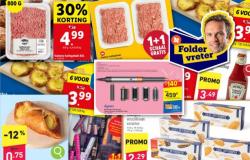The role of a breeder nowadays goes beyond just producing seeds. Bayer Crop Science is no exception. During this year’s Fruit Logistica, Andrew Burchett, Global Strategic Accounts Lead, and Nico van Vliet, Global Value Chain Development Lead, told us more about this.
International connection
Andrew talks about the opportunities he sees throughout the value chain. “We connect the marketing growers and the retailers. For example: one retailer focuses on one country, with one unique identification number supplied from seven countries on four different continents. It is both a challenge and an opportunity, as an international company, to use the know-how and capabilities to deliver the genetics that fit.”
Differences and overlaps between markets
With his international experience, Andrew knows how to respond to different markets. “In Europe the market is quite fragmented, while in the US it is much more consolidated. Yet the same things are important in both markets, such as consistent quality, good varieties and year-round supply.”
At Bayer they can scale up their capabilities or apply them differently, Andrew explains. “It’s about the same basic needs when we talk about the value chain. There is a lot of overlap, especially in the greenhouse horticulture market. We get excited when we find something new in Europe and then find a new market for it in Asia or America.”
In the US, the distance between growers and retailers is much shorter than in Europe. “In Europe the chain is much longer.” The markets also differ in terms of branding: “Growers in the US often have their own B2C brands. This is not yet very common in Europe.”
Marketing concepts
In addition to connecting growers and retailers, developing marketing concepts is another important role for modern breeding companies. An example Andrew gives is the Strabini, a “strawberry-type” vine tomato that is successful in Europe. “We developed it specifically for Europe. But the tomato is now also imported into North America, where we work together with a grower. In such cases we look at the value chain through the eyes of a consumer. We look at what is available in the shelves and then identify which markets may be suitable for this product.”
According to Nico, the Ruiter Experience Center is important in this regard. The center is located in Bleiswijk in the Netherlands and is internationally oriented. “We get a lot of international visitors who we show the different varieties. They can taste and we can show everything in two hours.”
See what the consumer sees
Andrew: “We take a look at the market to see what the range is. We look at the price ranges and the countries of origin. We also look at whether it is organic, whether the labeling is good and whether the packaging is good. That is what the consumer sees and is important. The consumer is the last buyer you ultimately have to influence.”
Decisions in a split second
Nico says that Bayer is using a new tool to convince consumers.
“We help the consumer decide in a split second which tomato they want to buy. We have developed a concept similar to the concept of the wine industry and Nespresso. The consumer can judge in two or three words whether this tomato is needed for lunch, as a snack, or for dinner. We want to offer this to retailers so that we can help consumers decide on their menu for the week.”
Strawberries on the horizon
This concept for tomatoes has now also been applied to melons. If there is added value to also develop this for strawberries, Bayer will do so. “The strawberry chain is new. Our growers are currently working on improving disease resistance through the Malling breeding program. We will develop new varieties on this basis.”
Investing in the entire value chain
Bayer Crop Science not only invests in varieties for greenhouses, but also in positioning with the retailer. The company also wants to get the right product to the right consumer. One step taken in this regard is regular contact with retailers. Nico: “In the coffee department, Nestlé has telephone contact with the supermarket almost every week, just like Unilever does for the deodorant department. This hardly happens with fruit and vegetables. We want to change that together with our partners in the value chain.”
For more information:
Bayer – Crop Science
Andrew Burchett
Tel.: +1 314 694 3550
Mobile: +1 202 689 9774
[email protected]
Nico van Vliet
Tel.: +31 10 529 2222
Mobile: +31 6 2303 4317
[email protected]






